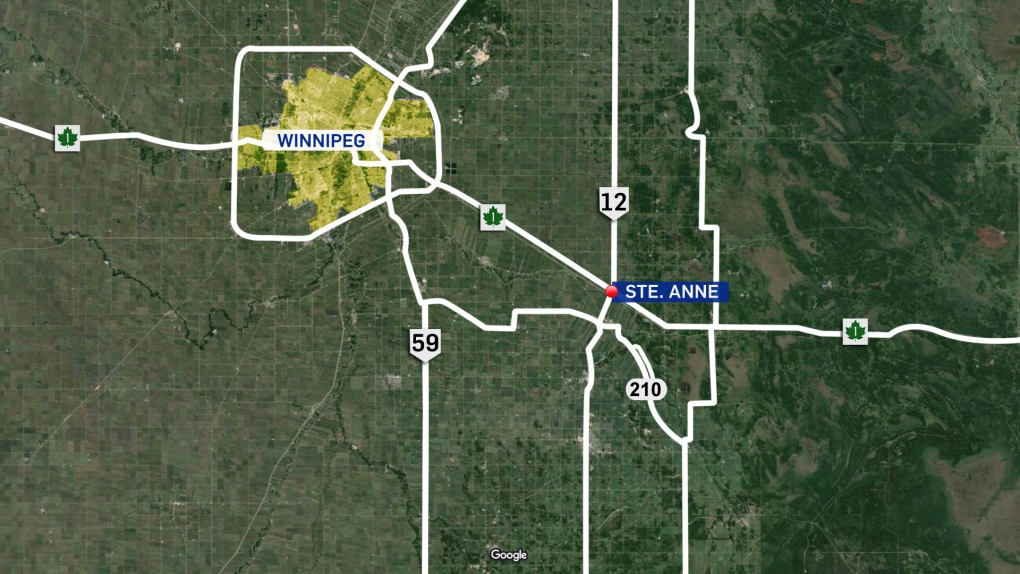This Manitoba community has nearly doubled in a decade. What's behind the population boom?
Riding his bike through Saint Anne, Man., lifelong resident Cliff Blair hardly recognizes the town.
"I noticed how big it was, and it was like – holy," Blair said. "That shocked me a little bit. It's like double the size."
According to population data and estimates from Statistics Canada, Ste. Anne has nearly doubled in the past decade – from 1,832 residents in 2013 to more than 3,300 residents as of 2023.
Booming by 81 per cent over the decade, Ste. Anne saw the highest percentage growth in the province followed by Niverville (64 per cent) and West. St. Paul (61 per cent).

"The growth rate has maybe even caught us by surprise as far as how quickly it's gone," said Ste. Anne Mayor Yvan St. Vincent.
He said for a long time there was little to no growth in the community. But that all changed about 10 years ago.
"We saw a lot of bedroom communities like Oak Bank and Niverville and places like the Saint Adolph. We saw them boom and grow. And the council at that time 10 years ago, thought, 'You know? It's our turn.'"
And grow they have – but how did they do it?
St. Vincent said the council first focused on giving new residents a place to live by selling developers on the town's location – a bedroom community less than an hour outside Winnipeg.

"We started trying to tap into that. We're close to Winnipeg and a little quieter, a little safer, but still not too far away from anything that you really need," he said.
It's attracted around six major developments to the area, transforming once-empty fields into new neighbourhoods filled with hundreds of new residents. It's got to the point where Ste. Anne is pushing up against its boundaries with the surrounding rural municipality.
"If we want to continue to grow, then we're going to need to get some more land for the town," St. Vincent said, adding the town is working with the neighbouring RM to acquire more land through annexation.
Infrastructure costs threatens boom
But that growth comes with its own challenges.
"New residents and new homes are great, but (they) also now need new resources," St. Vincent said. "The problem with our growth is keeping up with the infrastructure."
The Federation of Canadian Municipalities estimates one housing unit can cost a municipality around $107,000 in investments.
- Part 1: Inside a Manitoba ghost town, a group of ladies works to keep it alive
- Part 2: 'Low property taxes, friendly neighbours': How some Manitoba communities are selling small-town living
"In some instances, this growth is stopped because there is not enough money put into infrastructure," said Denys Volkov, executive director of the Association of Manitoba Municipalities.
He said most municipalities' main income is property taxes. When faced with costly infrastructure upgrades required to support growth, they can either raise taxes or look to governments for help.
"They alone often cannot afford upgrades to infrastructure, so municipalities would like to work closely with provincial and federal governments to build infrastructure."
A prime example of this in Ste. Anne is the town's school.
 The mayor of Ste. Anne says the town's school busting at the seams. The school is pictured in September 2024. (Source: Danton Unger/CTV News Winnipeg)
The mayor of Ste. Anne says the town's school busting at the seams. The school is pictured in September 2024. (Source: Danton Unger/CTV News Winnipeg)
St. Vincent said the town was promised a new school by the former PC government, but that has been put on pause by the new NDP government.
"We're really advocating daily for the new school to be built because the school that we have is busting at the seams because of our growth," he said.
In a statement to CTV News, Manitoba Education Minister Nello Altomare said his office has met with the Seine River School Division.
"We are reviewing space utilization data from all school divisions to inform the 2025/26 capital plan," Altomare said. "St. Anne’s school will be considered as part of that review."
'It is part of our roots'
The mayor said council is now focused on bringing new employment opportunities to Ste. Anne – like a new Co-op grocery store currently being built – so its growing population can live and work in the community.
But St. Vincent says there is still a balancing act involved.
"Still kind of offering that small town feel, small town service, but just having a few more amenities."
He said part of that includes respecting and honouring Ste. Anne's heritage.
"This was largely a Francophone community years ago," he said. "We do all we can to make sure that we respect and uphold that culture, because it is part of our roots."
Even with all the growth, Blair said he's sure Ste. Anne will stay true to its small-town charm – a place where everyone is ready to give a wave with a friendly 'bonjour'.
"That's Ste. Anne in a nutshell," he said, waving a greeting to someone walking past him.
CTVNews.ca Top Stories

Ontario Premier Doug Ford threatens to cut off energy to U.S. in response to Trump's tariffs
Ontario Premier Doug Ford has threatened to cut off energy supply to the U.S. in response to the tariffs President-elect Donald Trump plans to impose on all Canadian imports.
Elon Musk calls Justin Trudeau 'insufferable tool' in new social media post
Billionaire Elon Musk is calling Prime Minister Justin Trudeau 'an insufferable tool' in a new social media post on Wednesday. 'Won't be in power for much longer,' Musk also wrote about the prime minister on 'X.'
Trudeau will have to 'kiss the ring' to achieve smoother bilateral relations with Trump: John Bolton
If Prime Minister Justin Trudeau wants to get on U.S. president-elect Donald Trump's good side for the sake of a smooth bilateral relationship, he'll likely have to be openly deferential, says former U.S. National Security Advisor, John Bolton.
MAID cases rose to 15,000 in 2023, but growth of cases halved
More than 15,000 people received medical assistance in dying in Canada in 2023, but federal statistics show the growth in cases has slowed significantly.
Luxury real estate brokers charged in federal indictment with sex trafficking in NYC
Two luxury real estate brokers and their brother have been charged with luring, drugging and violently raping dozens of women over more than a decade.
Police locate labyrinth of tunnels connecting tents to generator in Hamilton encampment
Hamilton police say that they discovered a series of 'man-made holes and tunnels' during a patrol of a downtown encampment earlier this week.
Certain foods may disrupt your body's fight against cancer cells, study says
The food you eat may be affecting your body’s ability to fight cancer cells in the colon, according to a new study.
Banks lower prime rates following Bank of Canada move
Canadian financial institutions are lowering their prime lending rates to match the decrease announced by the Bank of Canada.
Toronto agency launches court challenge against new law that would shutter some supervised consumption sites
A social agency that runs a supervised consumption service (SCS) in Toronto’s Kensington Market has launched a court challenge against new legislation that will see 10 such sites shuttered across the province, arguing that the law violates the Charter of Rights and Freedoms.


































